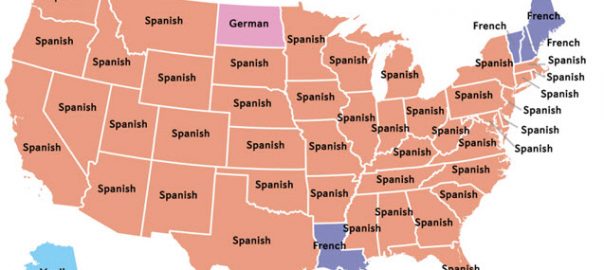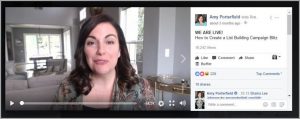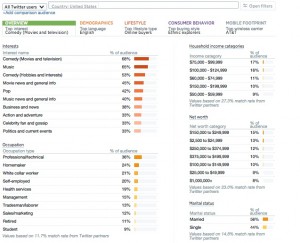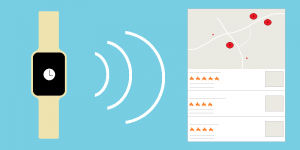
This month, I’ve been working hand-in-hand with Google account managers to review and assess a group of accounts, ultimately coming up with our top three most impactful recommendations for each account. During these conversations, I’ve learned a few new AdWords tips and techniques and different approaches to the “old faithfuls” we’ve been using here at WordStream for years.
Looking for some fresh strategies to implement in your AdWords account? Here are four super-actionable AdWords tips that I’ll definitely be trying in the next few weeks!
AdWords Tip #1: Combine Branded Terms with Modified Broad Keywords
The secret to lowering your CPCs and simultaneously boosting your ad rank lies in Google’s mystery metric—Quality Score. Savvy advertisers are perpetually tweaking their accounts in pursuit of those coveted 10’s, but achieving high scores isn’t an easy feat. In fact, it seems as though the only keywords that consistently score 7-10’s are branded terms.

Branded terms are a slam dunk for many reasons. Firstly, it’s easy to create super-relevant ads and landing pages for these keywords, as your brand should appear regularly throughout your ad copy and website. Even better, the people who are searching your branded terms likely have strong intent; they know exactly what company they’re looking for so they’re apt to click on your ads and have high engagement rates on your website.
While these keywords may be the holy grail for high Quality Scores, you certainly don’t want to limit your ad visibility to people who already know of and are looking for your brand. That said, you can leverage the power of these branded keywords to impact the Quality Scores of non-branded terms.
Here’s how the hack works – create keywords that are a combination of branded and non-branded terms. Set the non-branded term to modified broad (using + signs), but leave the branded term on broad. Using this technique will allow your ads to show when people search combinations of your non-branded terms—your branded terms do not have to be present.
So, for example, let’s say that your branded term is Havaianas and your non-branded terms are neon flip flops. You’d add the keyword as havaianas +neon +flip +flops, and the ad would be eligible to show for search queries that include the words neon, flip and flops.
Why does this technique yield high Quality Scores? Remember, Google calculates your scores based on exact matches to your keyword term. Because the “official” keyword technically includes your branded terms, it’s likely to yield a stellar Quality Score.
AdWords Tip #2: Take Advantage of Location-Based Bid Modifiers
One of the best ways to fine tune your AdWords account is to identify what’s working and amplify it (or promote your “unicorns”—in Larry Kim speak). One route to do this is through location-based bid modifiers.
Far too many advertisers set their targeting to reflect the areas where their products are sold and neglect to revisit these settings. The problem is, not all geographic locations yield the same performance. For example, if you sell hunting equipment, there’s a good chance that you’ll see more conversions coming from searchers in rural areas where hunting is a popular sport than those in heavily populated urban centers.

Rather than guesstimating which regions are the most valuable for your business, head to the Dimensions Tab and set your view to Geographic. This will produce a sortable report that breaks down your performance metrics by country, region, metro area, city and “most specific location.” Organize by conversions to understand the regions that are bringing in the most sales for your business.

Once you’ve identified your most valuable locations, revisit your location targeting settings and set a positive bid adjustment for each of these locations. Higher bids will help you to attain better visibility for searchers located in (or searching for products within) your top locations, ushering in even more conversions.
AdWords Tip #3: Reach Beyond Your Current Language Settings
According to a 2013 study by the Center for Immigration Studies, one in five US residents speaks a language other than English in their household. However, just because their preferred language isn’t English does not mean that the vast majority of these people don’t also speak English.
Remember, AdWords bases its language targeting settings on a Google user’s interface language. Users can edit this setting to ensure that Google provides results in their selected language, regardless of their physical location.

As you can see, when I change my preferred language settings to Spanish, I’m only served ads that are targeted to Spanish speakers, despite the fact that I am logged into the US version of Google.com.

As you can imagine, many of these bilingual Americans set their first language as their primary language on Google, effectively eliminating ads from any companies who do not include Spanish-language targeting in their AdWords campaigns. This is a huge source of missed opportunity for US-based advertisers who absolutely should be advertising to the bilingual consumer-base.
It may sound like a headache to expand your advertising efforts to a completely new market, but it’s actually quite simple. First, identify which languages are most prominent in your target regions.

Source: Slate.com
Then, adjust your language targeting settings to include this new audience.

That’s it! There’s no need to add non-English keywords, ads or landing pages. It almost feels too good to be true, right?
Here’s why this trick works—if your website doesn’t translate seamlessly or your sales reps aren’t trained to support multiple languages, you really shouldn’t risk going “whole hog” and creating campaigns specifically for non-English speakers. This could actually do more harm than good, as this campaign would likely garner plenty of impressions and clicks, but fewer conversions. Instead, this trick truly helps you to connect with a bilingual audience; people who are using a non-English browser but will still understand and respond to ads written in English.

As you can see in the example above, GrubHub has adopted this strategy perfectly. This is clearly a bilingual searcher (her Google profile is set to Spanish, but she is searching in English) and GrubHub’s English ad should suit her just fine!
AdWords Tip #4: Salvage Dying Ad Groups with RLSA
Ever have an ad group that you feel really good about but it just isn’t pulling through with strong results? It’s hard to hit the pause button when your gut tells you that these keywords hold unseen potential. It’s also hard to justify running keywords that aren’t yielding many clicks.
Rather than pulling the plug completely, try resurrecting your ad group using Remarketing Lists for Search Ads (RLSA). With this feature, you can restrict its traffic by solely displaying ads to people who have already visited your site. Since they already know who you are and have shown an interested in your offerings, they’re more likely to be further along in the purchase cycle and ready to convert than your standard audience.

If you decide to go this route, it crucial that you execute it properly. With RLSA, your primary targeting criteria is still keywords—your remarketing list is then layered in as a secondary targeting method. When adding your remarketing list, you have the opportunity to set it to “bid only” or “target and bid.” In this scenario, be sure to select “target and bid”, which limits your ads’ visibility to past site visitors.
Business & Finance Articles on Business 2 Community(67)
Report Post






